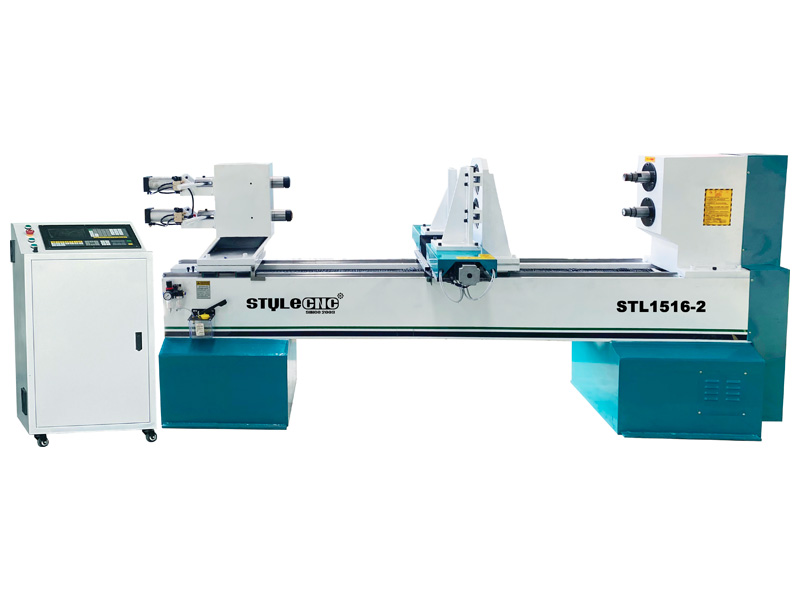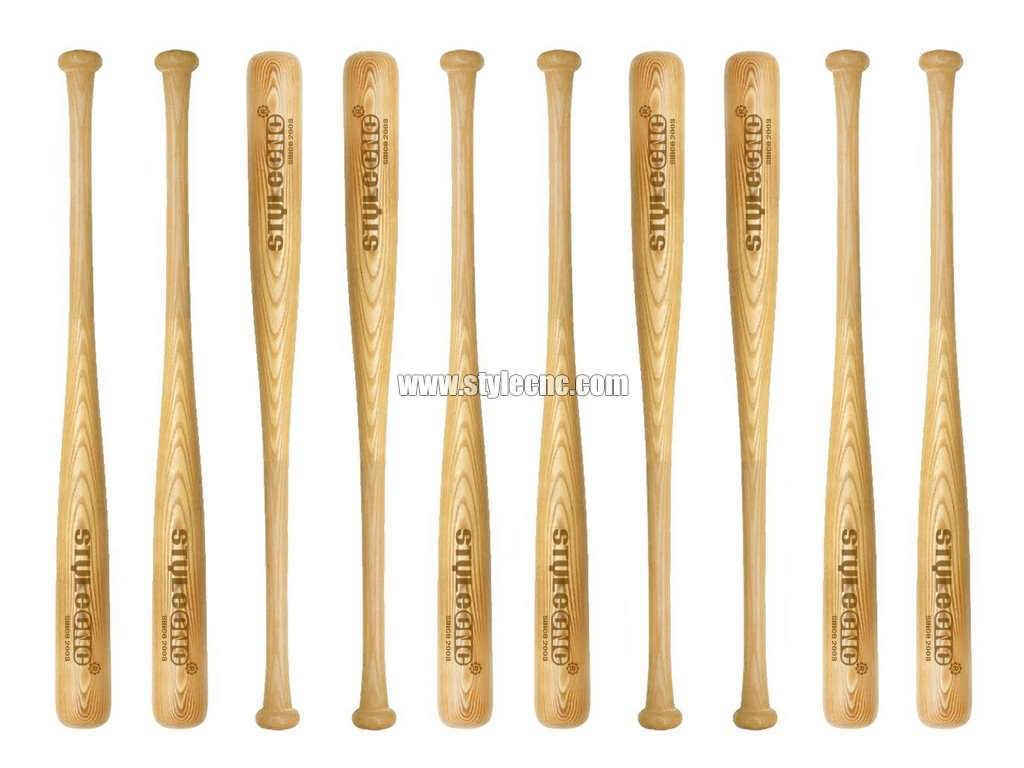Turning a baseball bat on a metal lathe can seem challenging. But with the right steps, anyone can do it.
Using a metal lathe to create a baseball bat offers precision and control. This process involves shaping wood into a smooth, balanced bat. It’s a rewarding skill that combines craftsmanship with the joy of seeing a project come to life.
In this guide, we’ll explore each step to help you understand and perform the task. Whether you’re a hobbyist or a budding craftsman, this guide will make the process clear and manageable. Let’s dive into the details and get started on crafting your perfect baseball bat.

Credit: www.stylecnc.com
Introduction To Metal Lathing
Metal lathing is an essential skill for crafting precise objects. It’s commonly used to shape metal parts. This technique involves spinning a metal workpiece. A cutting tool then shapes the material. Turning a baseball bat on a lathe may seem challenging. But with practice, it can be done successfully.
Basics Of Lathing
Start by securing the metal piece on the lathe. Ensure it’s tight and stable. Next, choose the right cutting tool. Different tools create different shapes. Make sure the tool is sharp. Position the tool against the metal. Begin with slow, steady movements. Gradually increase the speed as you gain confidence. Always wear safety gear. Eye protection is crucial. Keep your hands away from the moving parts.
Importance Of Precision
Precision is vital in metal lathing. It ensures the final product meets specifications. Small errors can ruin the whole piece. Use precise measurements. Double-check them before cutting. A small mistake can waste material. Follow the markings carefully. Consistent pressure is key. Avoid sudden movements. They can cause uneven cuts. Practice improves your precision skills. Over time, you’ll get better.
Choosing The Right Materials
Choosing the right materials is crucial for turning a baseball bat on a lathe metal. The materials you select will determine the bat’s strength, weight, and durability. Let’s delve into the specifics of choosing the right types of metal and selecting the bat blank.
Types Of Metal
Different metals have distinct properties. Here are some common types:
- Aluminum: Lightweight and corrosion-resistant. Ideal for beginners.
- Steel: Strong and durable. Suitable for heavy-duty applications.
- Titanium: Lightweight and extremely strong. Perfect for professional use.
Each metal type has its pros and cons. Consider the bat’s purpose before choosing.
Selecting The Bat Blank
A bat blank is the raw material piece used to shape the bat. Follow these steps to select the right blank:
- Measure the desired length and diameter of your bat.
- Choose a blank that matches these dimensions.
- Ensure the blank is free from defects like cracks or warps.
- Verify the metal’s quality and grade.
Here is a comparison table to help you choose the right bat blank:
| Metal Type | Pros | Cons |
|---|---|---|
| Aluminum | Lightweight, Rust-resistant | Less durable than steel |
| Steel | Very strong, Durable | Heavier, Can rust |
| Titanium | Extremely strong, Lightweight | Expensive |
Make sure to select a bat blank that fits your needs and budget. The right choice will enhance your lathe experience and result in a high-quality bat.
Essential Tools And Equipment
Turning a baseball bat on a lathe metal requires precision and the right tools. Having the proper equipment ensures a smooth process and a high-quality result. Below, we’ll cover the essential tools and equipment needed for this task.
Lathe Machine
A lathe machine is crucial for turning a baseball bat. It holds and rotates the metal workpiece while various tools shape it. Ensure your lathe is sturdy and has a reliable motor. A variable speed control feature is beneficial for adjusting the rotation speed as needed.
Cutting Tools And Attachments
Various cutting tools and attachments are required to shape the baseball bat. Here are some essential items:
- Carbide cutting tools: These are durable and maintain sharpness longer.
- Tool post: Holds the cutting tools in place.
- Center drill: Starts a hole at the center of the workpiece to ensure accuracy.
- Knurling tool: Adds texture to the bat handle for a better grip.
Using the right attachments helps achieve the desired shape and finish. A steady rest and a follower rest are also useful for supporting the workpiece during turning.

Credit: www.stylecnc.com
Safety Precautions
Wear safety goggles and gloves to protect yourself. Secure the bat properly on the lathe. Keep hands away from the spinning blade.
Turning a baseball bat on a lathe metal requires strict safety precautions. Careful preparation ensures a safe and enjoyable woodworking experience. Ignoring safety can lead to serious injuries.Protective Gear
Always wear protective gear while working on a lathe. Safety glasses protect your eyes from flying debris. A face shield offers extra protection. Wear ear protection to guard against loud noises. Gloves should fit snugly to avoid getting caught in the lathe. Long sleeves and long hair must be secured to prevent entanglement.Safe Handling Of Tools
Handle tools with care and precision. Ensure all tools are sharp and in good condition. Dull tools can cause accidents. Keep your hands at a safe distance from the spinning lathe. Always use a tool rest to stabilize your tools. Double-check that the lathe is properly secured before starting. Never leave the lathe running unattended. Following these safety precautions will help create a safe working environment. Proper safety measures ensure a successful and injury-free project. “`Preparing The Lathe Machine
To turn a baseball bat on a lathe metal, proper preparation is crucial. The lathe machine must be set up and calibrated accurately. This ensures precision and safety. Below, we’ll guide you through setting up and calibrating your lathe machine.
Setting Up The Machine
First, inspect the lathe machine for any visible damage. Ensure all parts are in good working condition. Then, clean the machine to remove dust and debris.
- Check the power supply
- Ensure the tool rest is secure
- Verify the tailstock and headstock alignment
Next, select the correct cutting tool for your project. Install it securely in the tool holder. Ensure the tool is sharp for a clean cut.
Finally, adjust the speed settings. Different materials require different speeds. Refer to the lathe’s manual for recommended speed settings.
Calibrating For Accuracy
Calibration ensures your lathe cuts precisely. Begin by zeroing the tool rest. Move it close to the workpiece without touching it. Then, set the digital readout to zero.
- Measure the diameter of the workpiece
- Adjust the tool rest accordingly
- Recheck the alignment of the tailstock and headstock
Next, use a dial indicator to check for runout. Attach the indicator to the lathe bed. Rotate the workpiece by hand and observe the dial. Adjust the tailstock if necessary.
Finally, perform a test cut. Measure the cut with calipers. Adjust the tool rest if the cut is not accurate. Repeat until the desired precision is achieved.
Turning The Baseball Bat
Turning a baseball bat on a lathe metal can seem like a challenging task. With the right steps, it becomes an enjoyable and rewarding project. This section explains how to shape and achieve the desired dimensions for your baseball bat.
Shaping The Bat
Start by securing a blank piece of wood onto your lathe. Ensure it is centered and stable. Use a roughing gouge to begin shaping the wood. Remove excess material until the blank is cylindrical. This is the basic shape for your bat.
Next, mark the key points on the blank where the handle, barrel, and knob will be. These marks guide your shaping process. Use a parting tool to define these sections. Slowly shape the wood, moving from one section to another. This ensures the bat takes its form gradually and accurately.
| Section | Diameter | Length |
|---|---|---|
| Handle | 1 inch | 10 inches |
| Barrel | 2.75 inches | 20 inches |
| Knob | 2 inches | 1 inch |
Achieving The Desired Dimensions
After shaping the bat, you need to refine its dimensions. Use calipers to measure the diameter at different points. This ensures uniformity and accuracy. For the handle, aim for a diameter of 1 inch. The barrel should have a diameter of 2.75 inches. The knob should be around 2 inches.
Once you have these measurements, use a skew chisel to smooth the surface. Remove any rough edges or uneven spots. Sand the entire bat with fine-grit sandpaper. This gives the bat a smooth and polished finish. Repeat the measurement process to ensure the bat meets the desired specifications.
Finally, apply a finish to protect the wood. Use a clear varnish or a wood stain, depending on your preference. This enhances the appearance and durability of the bat. Your baseball bat is now ready for use!
Finishing Touches
After shaping your baseball bat on a lathe, the finishing touches make it standout. These steps ensure the bat is smooth, durable, and ready for use.
Sanding And Polishing
Sanding is crucial. It smooths the surface and removes any rough spots. Start with coarse grit sandpaper (around 80-grit).
Follow these steps:
- Hold the sandpaper tightly.
- Sand along the bat’s length.
- Switch to finer grits (120, 220, 320-grit).
Keep sanding until the bat feels smooth. Next, polish the bat to give it a shine. Use a polishing compound and a clean cloth.
Rub the compound onto the bat in circular motions. Buff it with a clean, dry cloth for a glossy finish.
Applying Protective Coating
A protective coating enhances durability. It also gives the bat a professional look. Choose a clear varnish or polyurethane.
Here’s how to apply it:
- Apply a thin coat with a brush.
- Let it dry for 24 hours.
- Lightly sand with fine-grit sandpaper (400-grit).
- Apply a second coat.
Repeat the process for a third coat if needed. Ensure each layer dries completely.
A table can help you understand the process:
| Step | Description |
|---|---|
| Sanding | Smooth the surface with sandpaper. |
| Polishing | Use a polishing compound for shine. |
| Protective Coating | Apply varnish or polyurethane in thin layers. |
These finishing touches ensure your baseball bat is ready for the field. Smooth, polished, and protected, it will perform better and last longer.
Common Mistakes To Avoid
Turning a baseball bat on a lathe metal can be a rewarding task. Yet, common mistakes can hinder your success. Knowing these errors and how to avoid them ensures a smoother process and a better final product. Let’s explore these pitfalls in detail.
Misalignment Issues
Misalignment is a frequent problem during the turning process. It occurs when the bat is not correctly centered. This results in an uneven shape. Always double-check the alignment before starting. An off-center bat wastes time and materials. Use a dial indicator to ensure precision. This simple step makes a big difference.
Overcutting Or Undercutting
Overcutting and undercutting are common issues that affect the bat’s dimensions. Overcutting removes too much material. This weakens the bat. Undercutting leaves too much material. This affects the bat’s balance and feel. Take light passes with the cutting tool. Measure frequently to maintain control. Slow and steady wins the race.
Maintaining Your Lathe Machine
Maintaining your lathe machine is crucial for turning a baseball bat. It ensures smooth operation and long machine life. Regular care prevents breakdowns and keeps your work precise. Below are key steps to maintain your lathe.
Regular Cleaning
Clean your lathe after each use. Remove all wood chips and dust. They can affect the machine’s performance. Use a soft brush to sweep away debris. Wipe the surfaces with a clean, damp cloth. Dry all parts thoroughly to prevent rust.
Lubricate the moving parts. This reduces friction and wear. Use the recommended oil or grease. Follow the manufacturer’s guidelines. Clean the tool rest and tailstock often. They should move freely for accurate cuts.
Routine Inspections
Inspect your lathe regularly. Check for any loose bolts or screws. Tighten them as needed. Examine the belts and pulleys. They should be in good condition. Replace worn or damaged belts immediately.
Check the alignment of the headstock and tailstock. They should be perfectly aligned. Misalignment causes uneven cuts. Use a dial indicator to check alignment. Adjust if necessary. Look for any unusual noises. They can indicate a problem. Address issues promptly to avoid major repairs.

Credit: www.youtube.com
Frequently Asked Questions
What Materials Do I Need To Turn A Baseball Bat?
To turn a baseball bat, you’ll need a lathe, wood blanks, chisels, and safety gear like goggles and gloves.
How Do I Prepare The Wood Blank?
Cut the wood blank to the desired length. Ensure it’s square and mount it securely on the lathe.
What Speed Should The Lathe Run At?
For a baseball bat, set the lathe to medium speed. This ensures a smooth and controlled turning process.
How Do I Shape The Baseball Bat?
Start with roughing gouges to shape the bat. Use finer chisels for detailed finishes and smooth curves.
Conclusion
Crafting a baseball bat on a lathe metal can be fun and rewarding. Follow each step with care to ensure safety and precision. Practice improves skills, so keep trying. Soon, you will create beautiful, custom bats. Share your work with friends or use them in games.
Enjoy the process and take pride in your handmade bat. Happy turning!

I’m Darrell Boyd, and I live and breathe baseball. As an ardent aficionado of the game, I have established myself as a respected figure in the baseball community through my dedicated blog and insightful contributions to the sport.
Through my blog, I strive to offer comprehensive baseball guides, tips, and tricks that cater to players of all skill levels. Additionally, I provide detailed reviews of crucial baseball products and elements, giving my readers an expert’s perspective on what truly matters in the world of baseball.
With a deep understanding of the sport’s technical intricacies and strategic nuances, I go beyond surface-level analysis, delving into the finer points that define successful gameplay. My meticulous attention to detail and unwavering commitment to excellence have made me a trusted resource for players, coaches, and fans looking to deepen their knowledge and appreciation of the game.
I am dedicated to fostering a thriving baseball culture and am passionate about sharing my wealth of insights with a growing community of fellow enthusiasts. My mission is to continue inspiring and educating others, leaving a lasting impact on the sport that resonates with millions across the globe.
